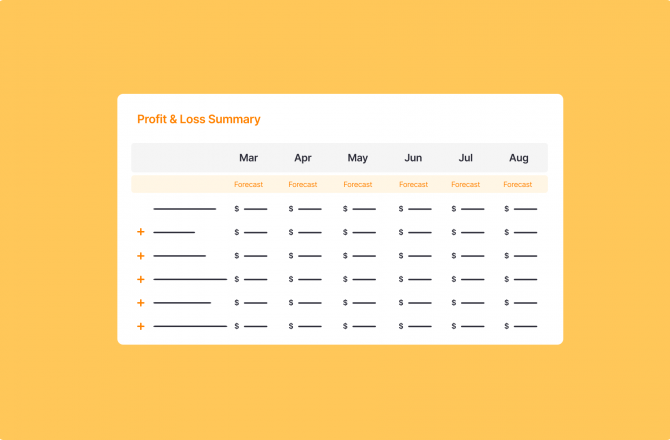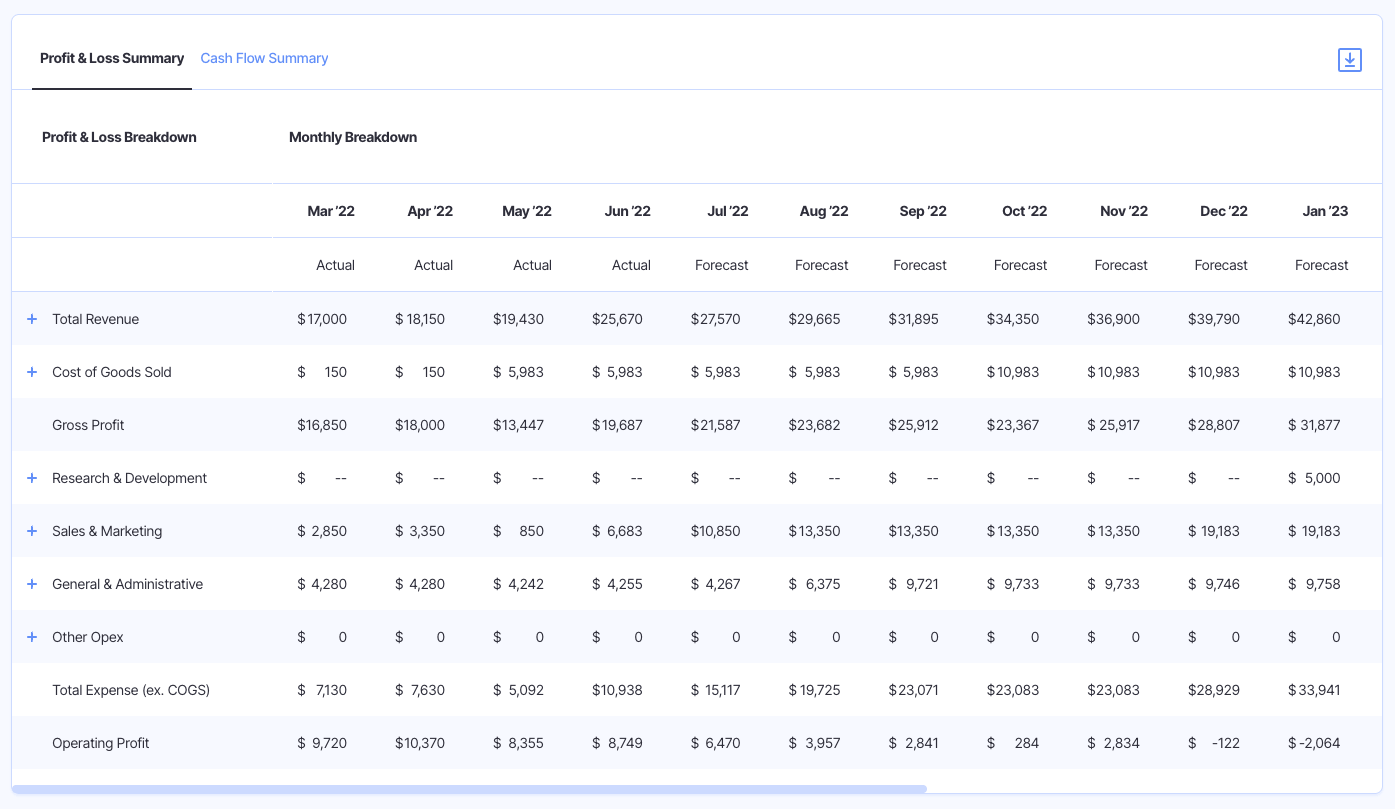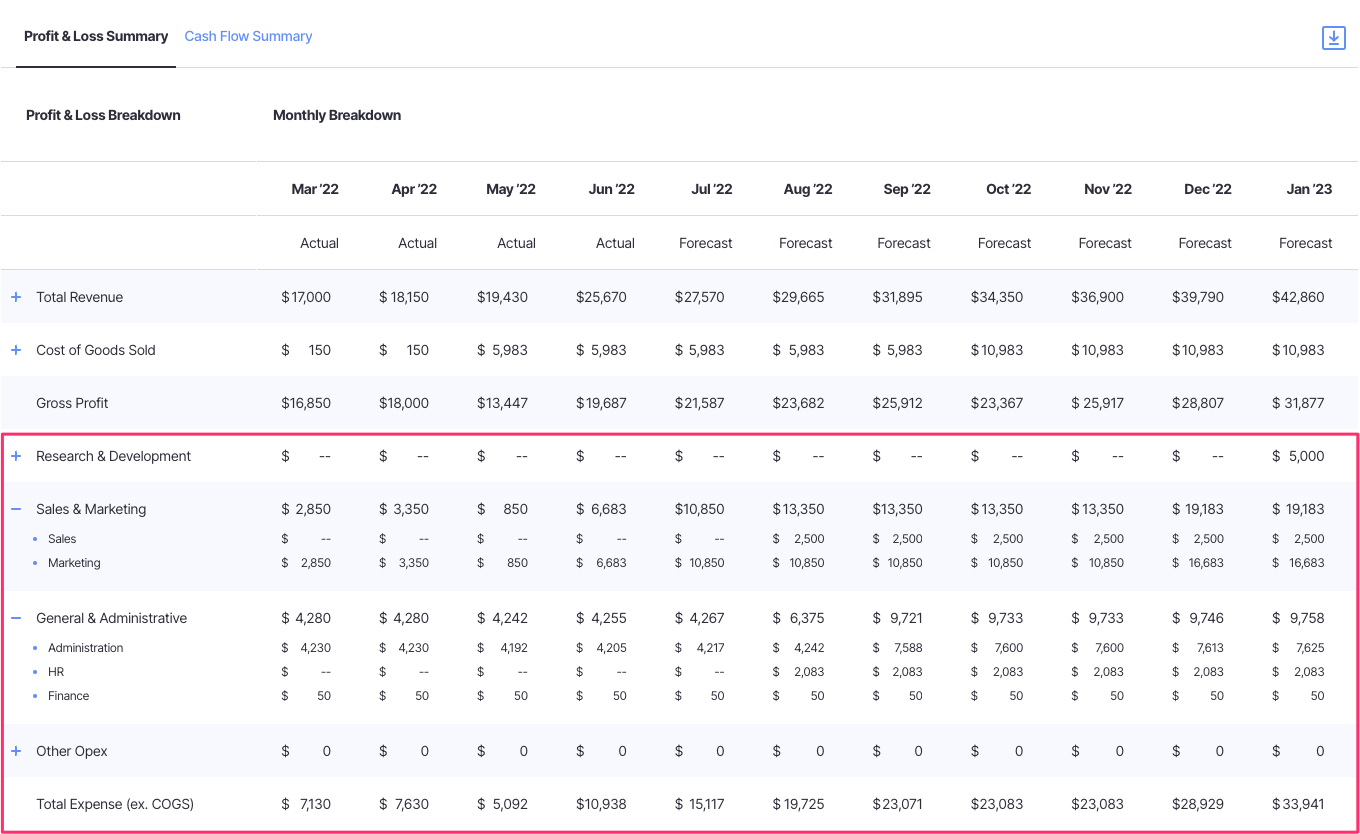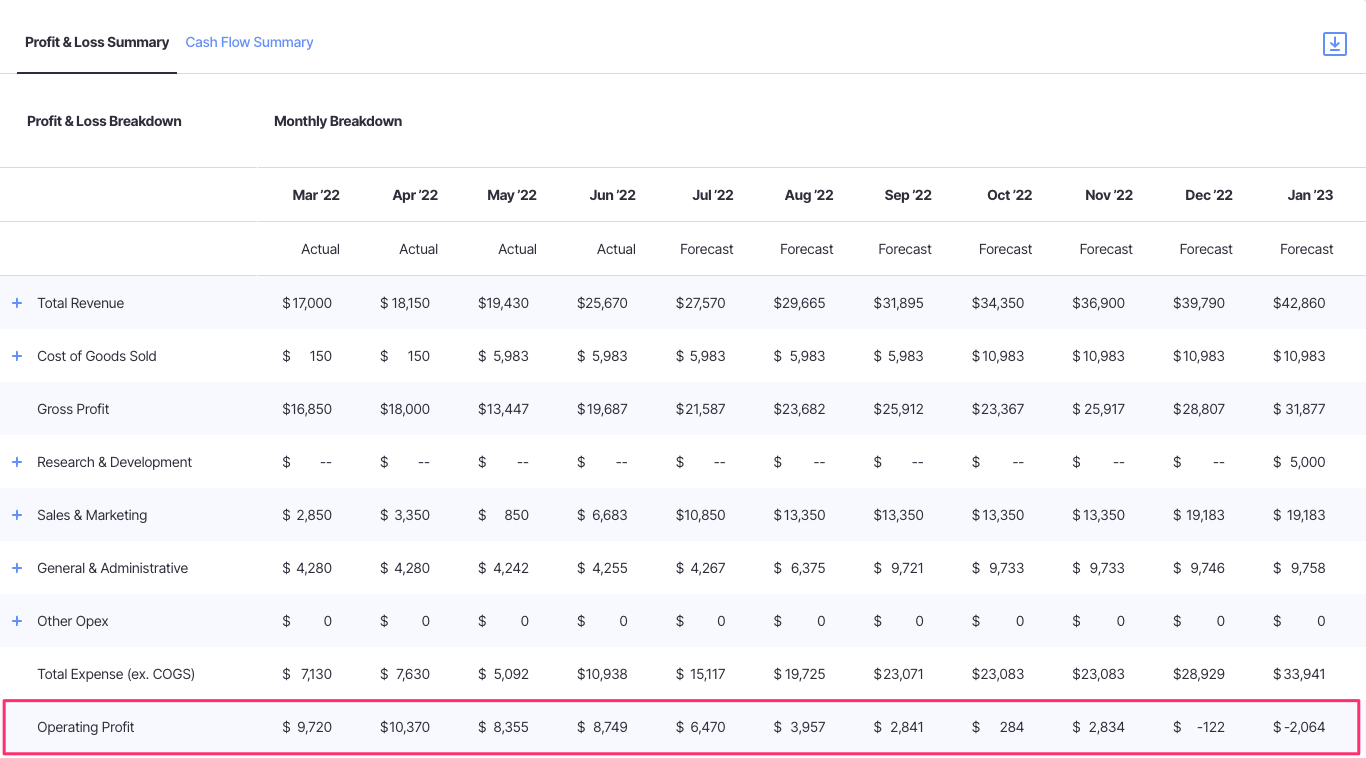P&L Management: The Ultimate Guide For Startups

Nothing burns a business down faster than a poor understanding of cash flow, revenue, expenses, and ultimately, what’s happening with the bottom line.
Finance leaders and startup founders alike need a keen perception of business financials.
The profit and loss (P&L) statement is one of the key financial documents that keeps you informed and allows you to make important decisions that drive revenue growth and push your company forward.
But short of understanding what a P&L is (and how to read one), how do you actually use this financial statement to inform business changes?
That’s what P&L management is all about—deriving insights from your P&L statement to grow your business.
In this guide, we’ll show you eight ways to use P&L management to drive business growth.
What Is A Profit And Loss Statement?
The profit and loss statement (also known as an income statement) is a formal financial statement that breaks down:
- Revenue
- Cost of goods sold (or cost of revenue)
- Expenses
- Profit

Financial professionals generally create P&Ls on a monthly basis, and most businesses will also want to see an annual P&L (particularly for tax and company reporting purposes).
Other timeframes (quarterly or weekly) might suit certain businesses, though monthly is generally the best P&L reporting cadence for fast-moving businesses.
The P&L is one of three crucial financial statements (the other two being the balance sheet and the cash flow statement), serving two purposes:
- Reviewing the company’s high-level financial performance for the previous period
- Indicating the company’s ability to generate more profit (either through cost reduction or revenue increases)
What Information Is Found In A P&L?
The typical profit and loss statement includes financial information in five categories.
Revenue
Also known as your gross income (or top line), revenue is the amount of cash you generate from selling goods or services.
Revenue from all sources (including interest, one-off, and subscription revenue) is included.

Direct Costs
Direct costs (aka COGS or cost of goods sold) are costs that are directly associated with revenue generation.
For example, if you manufacture and sell a physical product, the cost of the raw components would be considered direct costs.

Gross Profit
Gross profit is simply revenue minus direct costs. A high gross profit margin is generally seen as a good indicator of financial health.

Expenses
The rest of your expenses are listed here (i.e., anything that isn’t a direct cost).
Many P&Ls break expenses down into two categories:
- Operating expenses (aka OPEX or operating costs). These are ongoing, critical costs to business operation (utilities, rent, advertising, etc).
- Non-operating expenses. These are one-off costs (consulting fees, paying a lawyer, etc).

Operating Profit
Operating profit is the amount of money you’ve got left over once you’ve paid all the expenses listed above.
This could also be a net loss if your total costs exceed the revenue you generated for a given period.

Why is P&L Management Important?
Profit and loss statements are crucial documents for several reasons.
Obviously, they give you an indication as to your company’s financial health, and lay out exactly where money is coming in from, and going out.
But they also help you:
- Forecast revenue growth (you can analyze trends and make assumptions)
- Compare actuals against budgeted figures and analyze variance
- Assess our ability to reinvest in strategic initiatives (do you have enough profit to fund X?)
- Compare month-on-month profit margins to determine if you’re growing effectively
So, how can profit and loss statements help you make informed business decisions and drive growth?
How To Use Insights From Your P&L To Drive Business Growth
1. Compare P&L To Budgets To Calculate Variance
Every competent finance professional spends hours crafting budgets for their organization, outlining expected revenues and expenses that inform leadership’s business decisions.
But budgets don’t always go according to plan, resulting in variance (a difference between budgeted and actual figures).
Learn more about analyzing variance here.
P&L management makes it easy to identify (and then calculate) such variances.
In fact, many finance leaders include budgeted figures alongside their P&Ls for easy comparison.
When managing a P&L, compare actual numbers to budgeted figures and ask: did we miscalculate during the budgeting process, or did something unexpected occur?
2. Review Your Current P&L Against Past Performance
If you’re creating P&L statements on a consistent basis (you are, right?), then you have an easy way to compare past performance against your current standings.
You can do this on an annual basis (ideal for reporting to investors), but ideally, you’ll analyze P&Ls monthly to track progress.
The obvious metric to review here is the bottom line (profit).
Ask: is our profit increasing each month?
![]()
A little up and down along the way is okay, as long as the long-term trend is up and to the right.
Monthly P&L performance reviews can also apply to specific line items.
For example, you can track revenue increases from a specific product (if you sell multiple) or monitor overheads in the expense column.
3. Identify Your Revenue Drivers
Profit and loss statements not only tell you how much top-line revenue you’re making, but from which sources that revenue is coming.
Many companies have multiple revenue sources. For instance, a B2B SaaS company’s P&L might include several revenue streams:
- SME subscription revenue
- Enterprise subscription revenue
- Consulting and onboarding fees
- Interest
Analyze your profit and loss statement to determine which streams are your biggest revenue drivers.
These will be the line items that are not only the largest but are growing at the fastest rate.
For instance, if enterprise subscription revenue is growing more rapidly than other income streams, this can be taken as a good sign to double down on that channel.

4. Forecast Your Future Revenue And Expenses
Yes, profit and loss statements, by nature, look at what has happened in the past.
But they can (and should) also be used to predict what might happen in the future.
Take, for instance, a trend in revenue growth from a given customer segment.
In month one, revenue from this sector was $200,000. From there, you have:
- Month 2 – $220,000
- Month 3 – $235,000
- Month 4 – $266,000
In round numbers, you’re experiencing 10% revenue growth month-on-month, meaning by the end of the year, you can expect revenue from that channel to be around $570,000.
Analyze trends in your P&L, and if they’re stable, extrapolate to forecast future revenue and expenses.
5. Analyze Trends To Inform Investment Decisions
Trends like the one we just discussed can be used to inform future investment decisions.
Say you want to double down on enterprise sales reps.
You’ve identified that this is a key revenue driver (thanks to your handy P&L analysis), and you’ve decided that hiring another three reps and doubling your headcount is a strong investment in future revenue growth.
Of course, these reps come with a cost, and it’s one that you’ll need to pay out before you realize those revenue gains.
Understanding revenue trends (like the one we discussed in the previous point) allows you to confidently allocate funds toward investments such as this.
6. Identify Your Most Influential Cost Centers
Every company, regardless of size, has expenses, as much as we try to reduce them.
P&Ls break down expenses into line items and allow us to understand exactly where all that money is going.

Complex profit and loss statements will categorize costs by department (e.g., marketing, sales, admin, and operations), so you can understand which business sectors you’re investing most in, but you’ll also be able to analyze expenses at a smaller scale.
Use your P&L to understand if you’re spending too much on utilities, rent, wages, insurance, or software subscriptions.
Then, take appropriate action.
Perhaps those software costs are justified, or maybe the growing cost of wages is a positive thing (because you’ve just doubled your enterprise sales headcount, remember?)
Or, maybe these cost centers are eating too heavily into your margins, and not contributing enough to revenue growth.
P&L management will help you identify this.
7. Understand The Impact Of External Factors
The best financial experts are those who pay attention not only to internal operations but to external factors that may influence business success (things like economic and legal changes, as well as market shifts and new competitors).
P&L statements can help confirm your predictions on how such changes influence company growth.
Take, for instance, a minimum wage increase.
A month after this legislation comes into effect, you can review the P&L to understand what that change means for your employee expense.
8. Quantify The Effects Of Strategic Business Changes
When you make strategic changes (for instance, investing in a new marketing activity), you make some predictions about how these new initiatives will impact your business.
Because P&L statements are historical (they look backward at the previous financial period), they can tell you exactly what kind of impact such changes had.
Let’s say, for example, you decided at the end of quarter one that you needed to hire three more Customer Success reps.
At the end of quarter two, you can quantify the impacts of this initiative. You’ll see the increased wage expense, and (all going well), an increase in revenue from repeat buyers.
Conclusion
Profit and loss management is a crucial FP&A skill.
The best financial leaders are those that can not only prepare a robust P&L, but also analyze it to understand the impact of strategic changes and external factors and to make predictions and recommendations for future change.
To make strong recommendations, you’ll need a powerful financial modeling tool.
Check out Finmark today, we’ve got the tools you need. Or jump on a demo with our team and let us show you.
Contributor
This content is presented “as is,” and is not intended to provide tax, legal or financial advice. Please consult your advisor with any questions.
